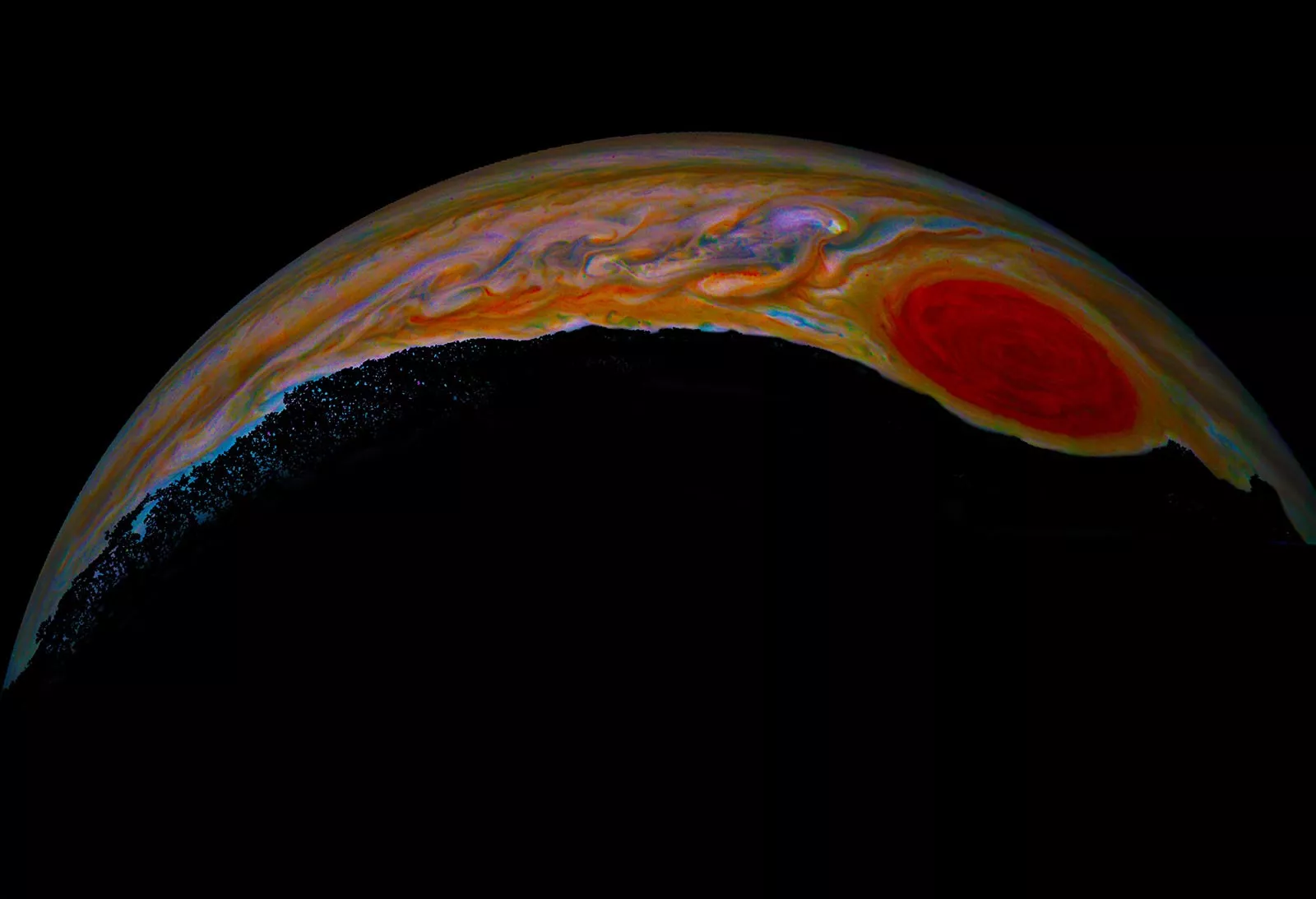Citizen scientist Mary J. Murphy processed images from the junocam instrument on the Juno. He increased color saturation and created what he called "the rose". This makes the already bright colors more spectacular. This picture shows Jupiter's famous great red spot.

The great red spot is a storm in the southern hemisphere of Jupiter. Its red clouds rotate counterclockwise and the wind speed is higher than that of any storm on earth. Over the years, the great red spot has been changing slowly, and its current width is about 1.3 times that of our planet. The data returned from Juno's mission helped scientists determine that the root of the storm extends at least 200 miles (320 kilometers) into Jupiter's atmosphere. For comparison, a typical tropical cyclone on earth extends only about 9 miles (15 kilometers) from the top to the bottom of the storm.
Junocam's original image was taken at 9:37 p.m. Pacific time on July 20, 2019, when Juno made its 21st close flyby of Jupiter. When the image was taken, the spacecraft was about 27000 miles (43000 kilometers) from the planet's cloud top and about 47 degrees south latitude.